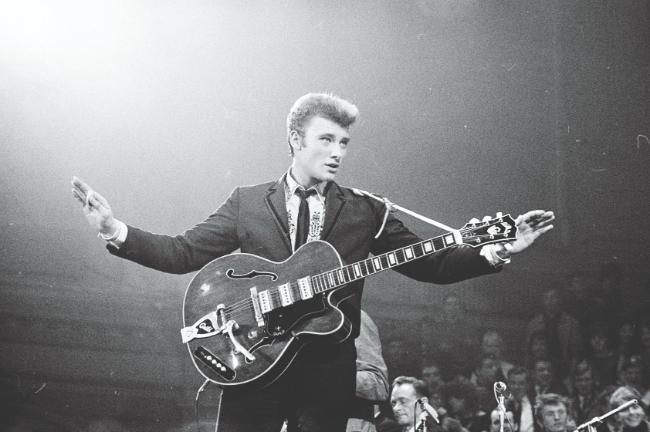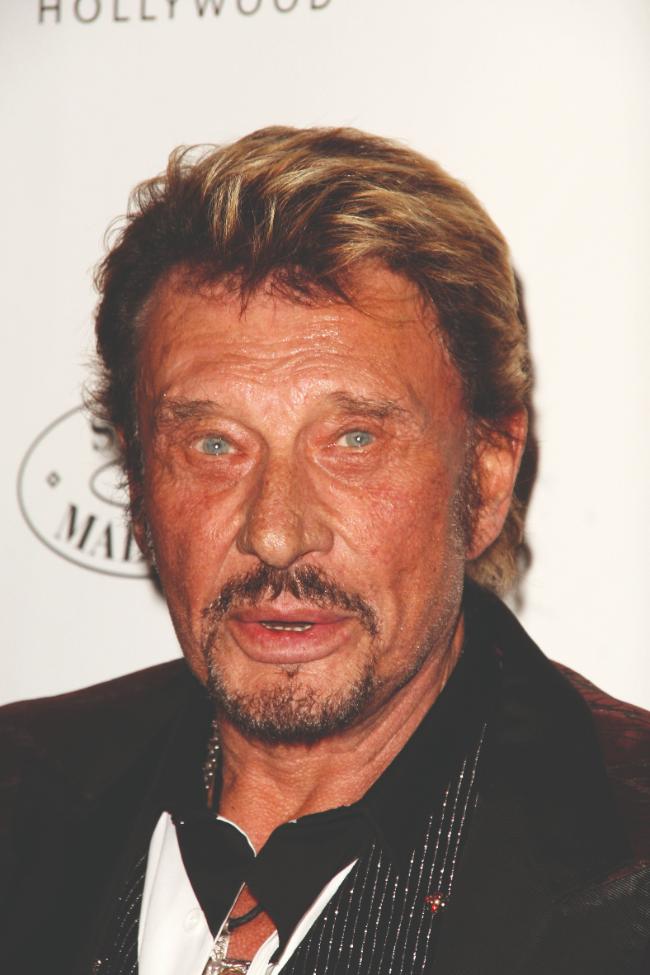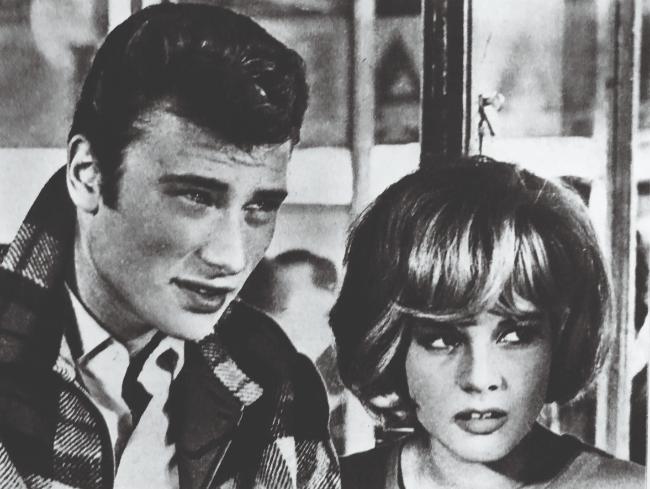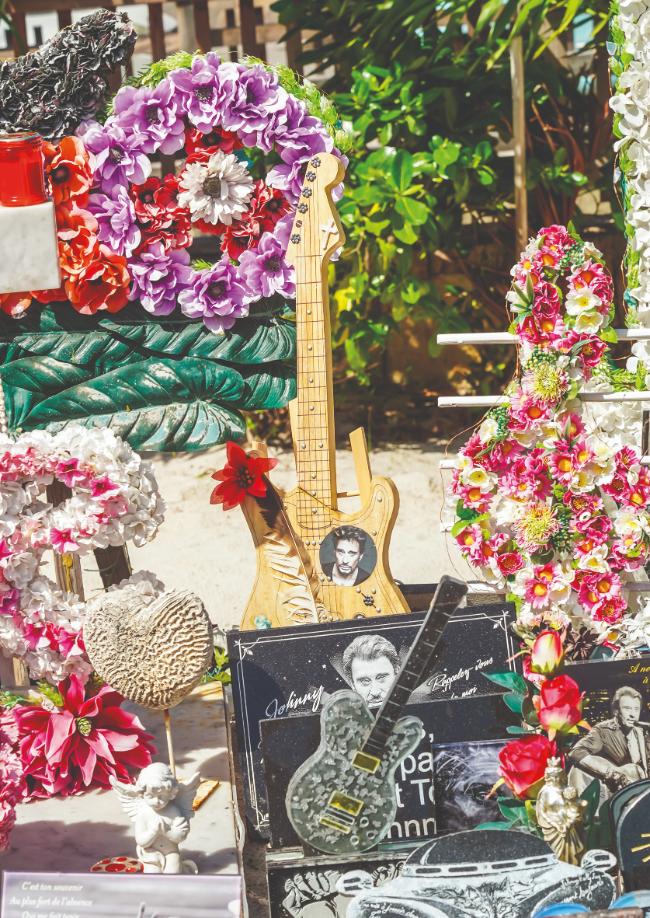In the Footsteps of Johnny Hallyday

From a bad influence on the French youth to a much-loved national treasure whose death prompted an outpouring of grief, we chart the highs and lows of France’s most famous rock star.
“You have to be here for Johnn Johnny because, from the beginning, Johnny was there for you. An indefinable humanity that made us feel less alone. That’s how Johnny came into our lives: he became a necessary presence, a friend, a brother.”
On December 9, 2017, in Paris, a visibly emotional Emmanuel Macron addressed a vast crowd of almost a million fans at the funeral for France’s greatest rock ‘n’ roller, Johnny Hallyday. From all walks of life, generations and regions of France, they lined the route of the procession – from the Arc de Triomphe along the Champs-Élysées to La Madeleine church – honouring their hero by cheering, – whistling, chanting songs, playing guitars and revving their Harley Davidson motorbikes. Others simply wept.

© SHUTTERSTOCK
Humble beginnings
“You are there for him, for Johnny Hallyday,” the president proclaimed. “You are still there, still there, always there. I know you’re waiting for him to jump out from somewhere. He’s on a bike, he comes towards you and starts the first song and you start singing with him.” Make no mistake: this was a state funeral on a Princess Diana scale. Hallyday’s impact on French culture cannot be underestimated. Over a career lasting 57 years, he released 79 albums and sold more than 110m records – mainly within the francophone world. When he performed at the Eiffel Tower in 2000, half a million fans turned up, with another 9.5m watching on TV. He also appeared in more than 30 movies between 1955 and 2017.
Born Jean-Philippe Smet, on June 15, 1943, in Paris’s 9th arrondissement, he had little interaction with his parents. His Belgian father, Léon Smet, was a hard-drinking nightclub performer who abandoned the family, while his French mother, Huguette Clerc, was often absent, pursuing her modelling career. The youngster was brought up by his aunt instead. Johnny’s stage name came courtesy of a cousin’s American husband, singer Lee Halliday, who gave him an early, invaluable schooling in showbiz, taking on a paternal role of sorts. It was Hallyday’s record company that inadvertently misspelt his last name with a ‘y’. But it stuck.
His first single, T’aimer follement, was classic Elvis Presley-style rockabilly and indeed, his early songbook was dominated by French versions of US rock ‘n’ roll tunes. But as his career progressed, he turned his gravelly baritone voice to heavy rock, blues, yé-yé, country, pop ballads and other genres. His most successful hits included Viens danser le twist, Retiens la nuit, Que je t’aime and Je te promets.
Early concerts would often descend into riot, causing 1960s President Charles de Gaulle to condemn him for corrupting French youth with American cultural imperialism. Intellectuals frowned on what they considered his low-brow pop culture, especially as his working-class fan base flourished. Yet, once he had cemented his position as France’s rock star-in-chief, he was then lionised by all levels of society – even presidents such as Jacques Chirac, Nicolas Sarkozy and Emmanuel Macron. In 1997, Chirac made him a Chevalier de Legion d’Honneur, a sign of his status as a national treasure.
To Hallyday’s frustration, he remained relatively unknown across the English- speaking world which had its own rock ‘n’ roll gods to adore. The problem was Hallyday’s songs were considered mere pastiches of English-language music – he was even nicknamed ‘the French Elvis’.
“My international career? It’ll happen if it happens,” he once said. “But I don’t specially want to succeed elsewhere. It’s better to be king in one’s own country than a prince elsewhere.”

© FOTOPERS BUREAU DE BOER
Like any true rocker, Hallyday lived life to the full. With achingly tight trousers, a coiffed blond mane, film-star cheekbones and a Gitane permanently dangling from his lips, he injected conservative post-war France with sexually-charged stage performances and his own imported, albeit Frenchified, version of American pop culture. In time he came to embody Les Trente Glorieuses, France’s 30-year post-war economic boom.
There was drug abuse, depression, two suicide attempts and multiple car crashes. Yet the more vulnerable he appeared, the more the fans loved him. “For a long time I couldn’t get out of bed in the morning without cocaine,” he once told Le Monde newspaper.
His nuptials record was just as excessive: five marriages, including two to the same woman. He had four children; one of them, David Hallyday, is now a musician and another, Laura Smet, an actress. He also adopted two Vietnamese girls, Jade and Joy, with his fourth wife, Laeticia. Fans wishing to follow in Hallyday’s footsteps will find he spent much of his life outside of France. His first home in Paris was on Cité Malesherbes in the 9th arrondissement. But as a youngster he travelled extensively with his aunt. In the late 1980s he had a hacienda-style villa called La Lorada built near Saint-Tropez. In the early 2000s he lived on a private street called La Villa Molitor, in Paris’s 16th arrondissement. He also spent many years in Los Angeles. Ironically, his obscurity in the US meant he could move about unhindered, often heading off on long road trips on his beloved Harley Davidson. “I love the tranquillity,” he said of California. “There are stars everywhere, but when I go for a walk no one bothers me.” To avoid punitive French tax, he also had a residence in the Swiss town of Gstaad. When he died of lung cancer in 2017, he was at his luxurious villa, La Savannah, in Marnes-la- Coquette, in the smart western suburbs of Paris. Just four days after his Paris funeral, his body was flown to the French Caribbean island of Saint Barthélemy, where he also owned a property, for burial in the cemetery of Lorient parish church.

© SHUTTERSTOCK,
Star status
Since his death at the age of 74, a street in Paris’s 12th arrondissement, near the Bercy concert hall he so often filled with fans, has been renamed Esplanade Johnny Hallyday in his honour. There’s also a giant statue depicting his trademark Harley Davidson motorbike perched on the end of a guitar fretboard. Even more kitsch is a 3m statue of the man himself, this one outside Le Tennessee pizzeria in the Ardèche town of Viviers, where his mother is buried. Fans regularly make the pilgrimage. The latest tribute to France’s most famous rocker is a new exhibition at Paris Expo Porte de Versailles, called ‘Johnny Hallyday L’Exposition’, staged in partnership with his widow, Laeticia. On show are multimedia projections of his live concerts, his guitars, his stage outfits, his jewellery, personal photos, items and documents, his last three motorbikes, his Cobra sports car and even a reproduction of his bedroom from his teens. But most intriguing of all is his office, which has been relocated, “object by object” from its original position in his Marnes-la-Coquette villa.
“I’ve dreamt about this exhibition,” explains Laeticia, who was married to Hallyday for 21 years. “It shows the man he was: his simplicity, his sentimental side, his fragility, his accessibility. But, in the end, it’s all about the music and about bringing to life the memories and emotions that he shared with his fans throughout his life.”
From France Today Magazine

Johnny Hallyday L’Exposition is at Paris Expo Porte de Versailles until June 19.
Lead photo credit : Performance_of_Johnn Hallyday 1963 © FOTOPERSBUREAU DE BOER, WIKIMEDIA COMMONS
Share to: Facebook Twitter LinkedIn Email
More in exhibition, French culture, French music, French singer
Leave a reply
Your email address will not be published. Required fields are marked *



